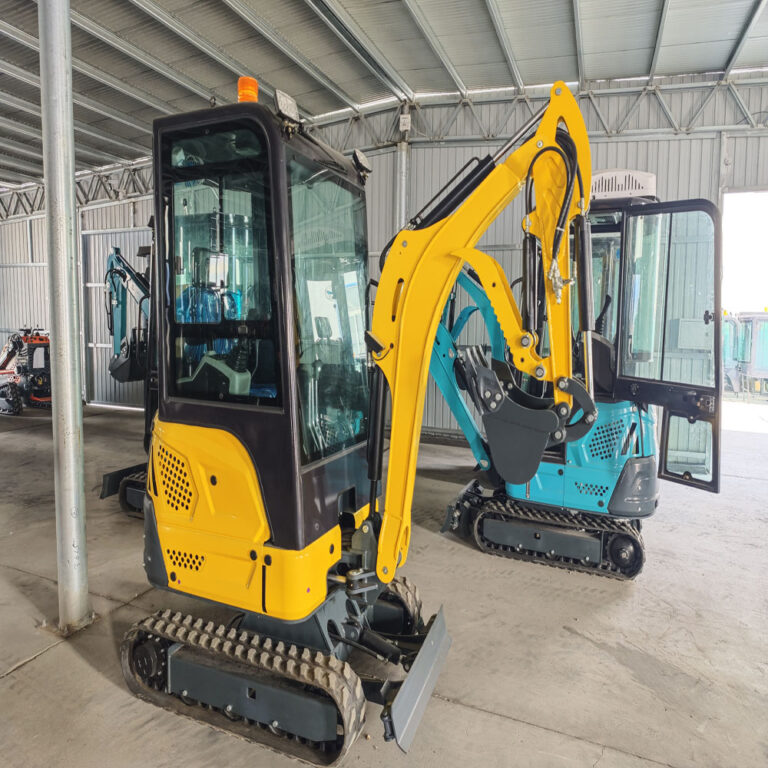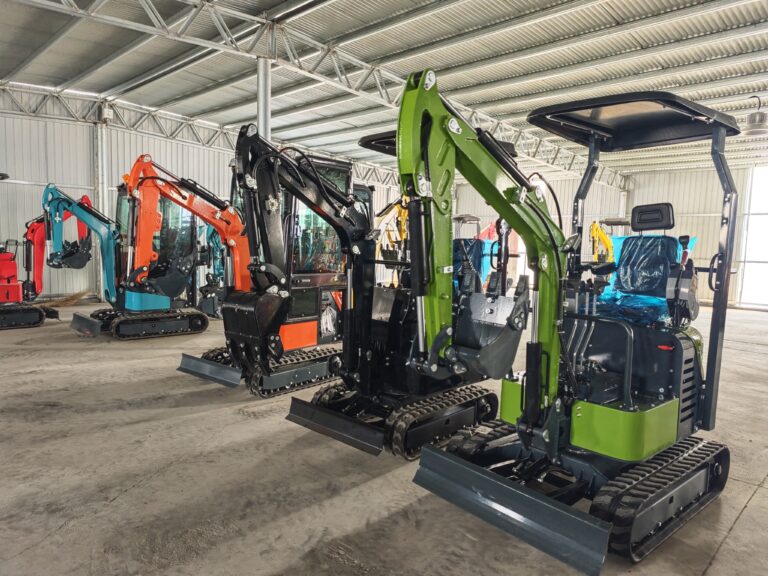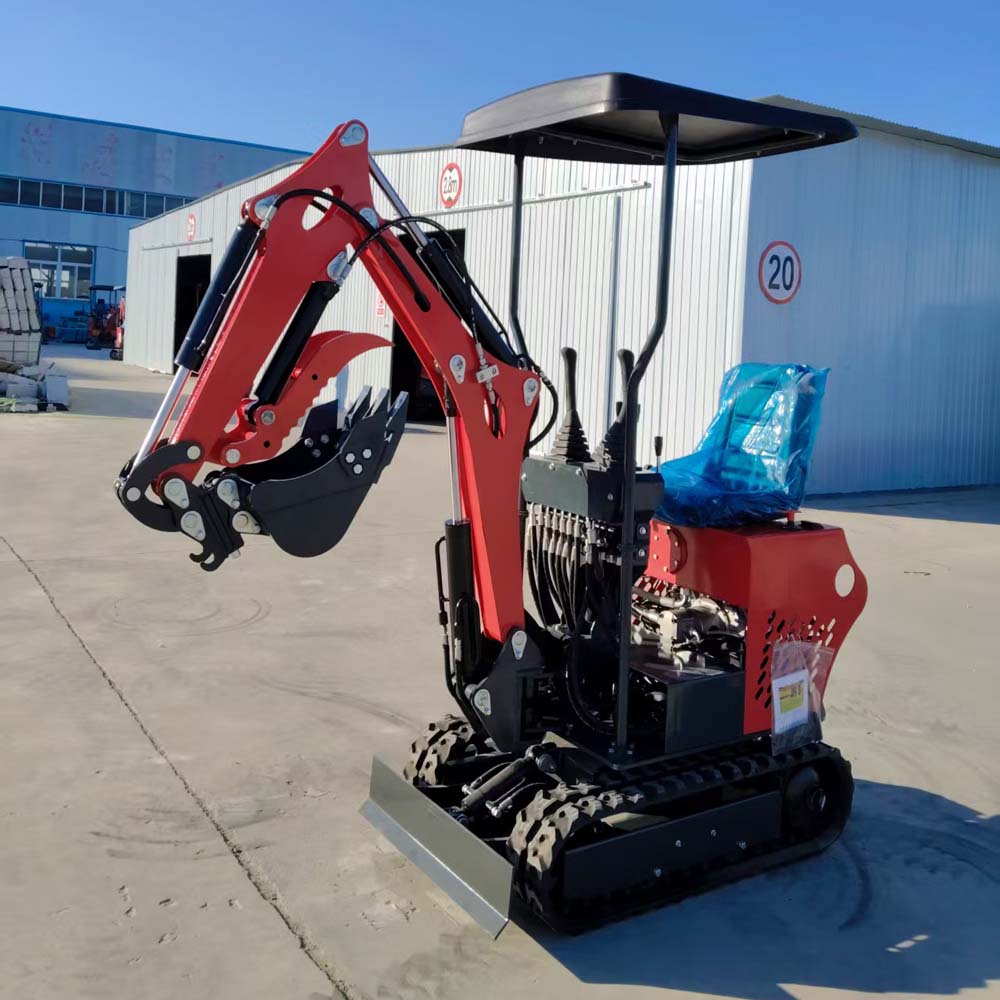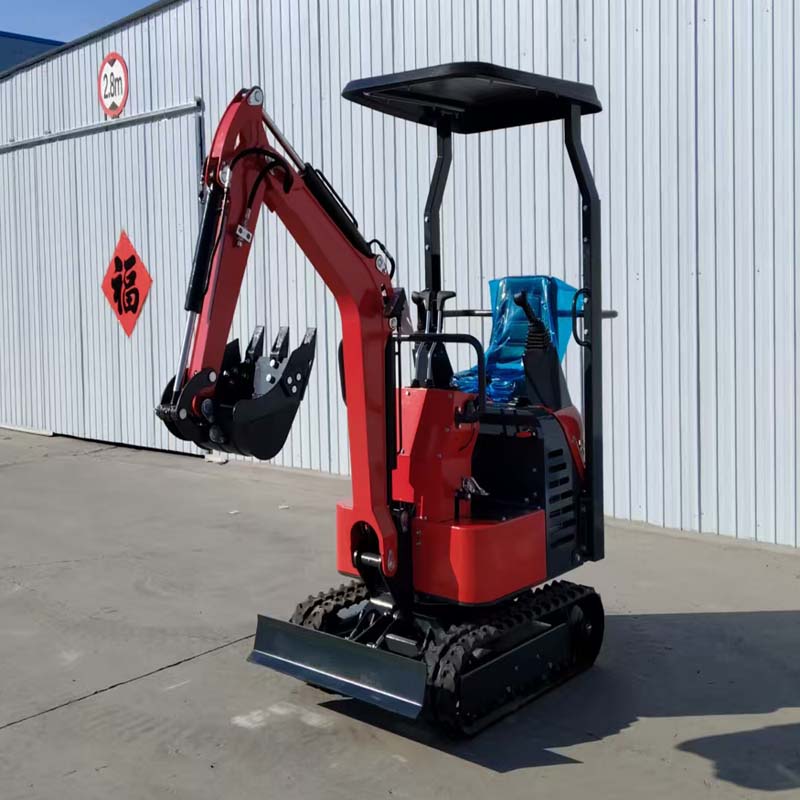-
No.196, Houqiao Village, Hutouya Town, Laizhou, Yantai, Shandong, China
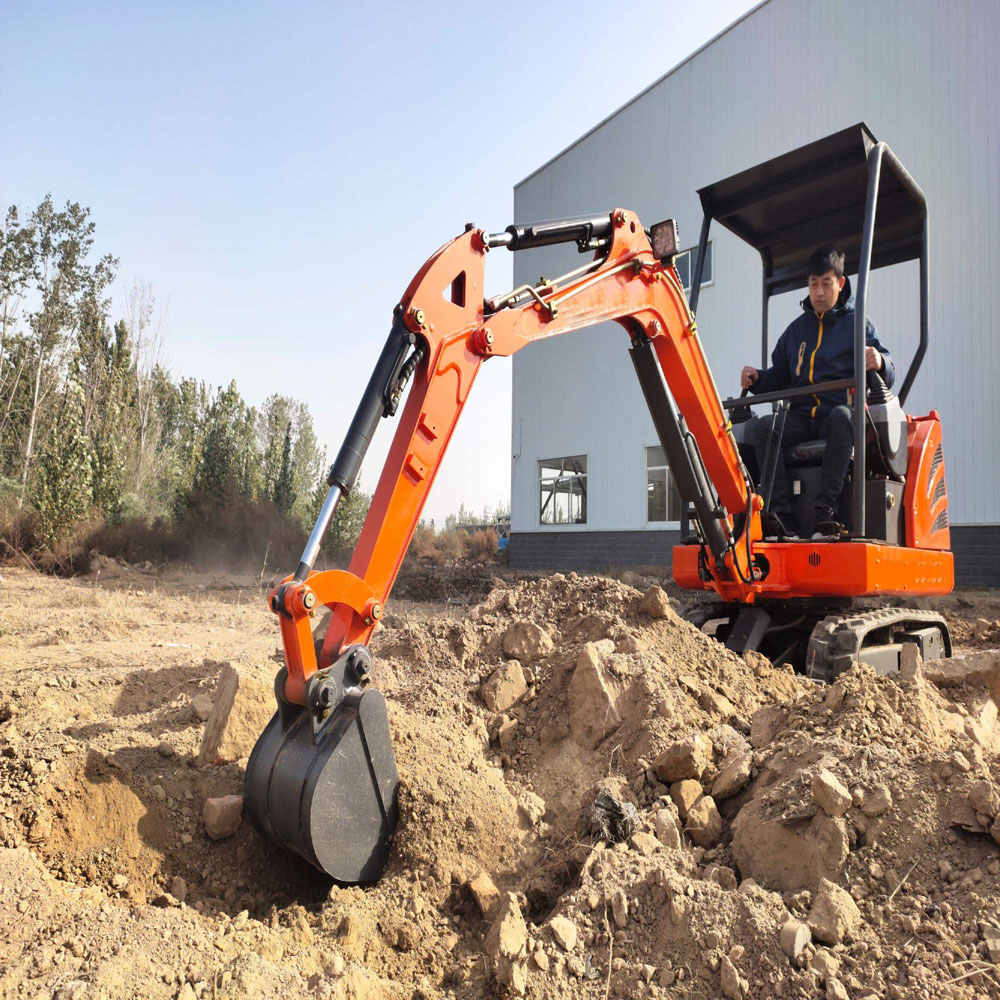
What should know for green hands operating excavators?
For green hands (beginners) operating excavators, safety, proper training, and understanding the machine’s basics are critical. Here’s a comprehensive guide to get started:
1. Prioritize Safety Above All
Pre-Operation Safety Checks
- Inspect the Machine:
- Check fluid levels (oil, fuel, hydraulic fluid), tire/track condition, and attachment security (e.g., bucket, breaker).
- Ensure safety features like seat belts, mirrors, cameras, and emergency stop buttons work.
- Site Assessment:
- Clear the work area of obstacles, bystanders, and underground utilities (call local utility services to mark lines before digging).
- Check for unstable terrain (e.g., soft soil, slopes) and ensure the machine is positioned on level ground to avoid tipping.
During Operation
- Wear PPE: Always use a hard hat, high-visibility clothing, gloves, and steel-toe boots.
- Stay Visible: Use lights, alarms, and signal flags in low-visibility conditions. Never assume others see you.
- Avoid Hazards:
- Keep the bucket low when moving to maintain balance.
- Never lift or carry people, and avoid working near power lines (maintain a safe distance—typically 10+ feet for low-voltage lines).
- Emergency Protocols: Know how to shut down the machine quickly and communicate with team members via hand signals or radios.
2. Learn the Machine’s Controls and Functions
Understand Basic Controls
- Cab Layout: Familiarize yourself with:
- Joysticks: Typically control arm/bucket movement (left joystick: swing and boom; right joystick: stick and bucket, though layouts may vary by model).
- Foot Pedals: Control travel (forward/reverse) and track steering (on wheeled excavators, use a steering wheel).
- Switches: For lights, attachments, and auxiliary functions (e.g., hydraulic lines for breakers).
- Practice Basic Movements:
- Swinging: Rotate the upper body smoothly to avoid abrupt stops.
- Digging: Lower the boom, extend the stick, and curl the bucket to scoop soil. Use steady, controlled motions.
- Loading: Lift the bucket, swing to the truck or pile, and dump by extending the stick and tilting the bucket back.
Attachment Basics
- Know how to switch between attachments (e.g., bucket, auger, grapple) and adjust hydraulic settings if needed. Start with a standard bucket before using specialized tools.
3. Master Machine Stability and Balance
- Track Positioning: On tracked excavators, extend the tracks fully for stability on uneven ground. On wheeled models, engage the outriggers (if available).
- Weight Distribution: Never overload the bucket—stay within the machine’s rated lifting capacity (check the operator’s manual). Overloading causes tipping or mechanical damage.
- Slope Safety:
- Avoid working on steep slopes. If necessary, angle the tracks perpendicular to the slope and move slowly.
- If the machine begins to slide, lower the bucket to the ground immediately to stabilize it.
4. Study the Operator’s Manual and Training
- Read the Manual: Understand maintenance schedules, warning lights, and technical specs (e.g., digging depth, reach, weight limits).
- Formal Training: Enroll in a certified training program (e.g., OSHA in the U.S.) to learn safety protocols, machine operation, and local regulations. Many countries require licensing for excavator operation.
- Shadow an Experienced Operator: Observe how they handle the machine, manage the worksite, and troubleshoot issues.
5. Develop Good Habits and Awareness
Slow and Steady Wins
- Avoid rushing—jerky movements can damage the machine, the site, or cause accidents. Use smooth, gradual joystick inputs.
- Practice in an empty, controlled area before moving to a busy worksite.
Stay Aware of Your Surroundings
- Continuously scan the area for workers, obstacles, or changes in terrain. Use mirrors and cameras to check blind spots.
- Communicate clearly with coworkers—never assume they know your next move.
Post-Operation Care
- Park Safely: Lower the bucket to the ground, shut off the engine, engage the parking brake, and secure attachments.
- Record Maintenance: Log hours of operation, fuel usage, and any issues (e.g., leaks, unusual noises) for the maintenance team.
6. Common Mistakes to Avoid
- Overconfidence: Don’t attempt tasks beyond your skill level (e.g., deep trenching, heavy lifting).
- Ignoring Warning Signs: Strange sounds, vibrations, or fluid leaks mean stop operating and report the issue.
- Poor Fuel Management: Running out of fuel mid-task can stall the machine and cause delays (or damage in some cases).
7. Know When to Ask for Help
- If you’re unsure about a task, terrain, or machine function, ask an experienced operator or supervisor.
- Never hesitate to pause work if you feel unsafe or overwhelmed.
Final Tips for Success
- Practice Patience: Operating an excavator takes time and repetition to master. Start with simple tasks (e.g., grading, shallow digging) before advancing to complex projects.
- Stay Curious: Learn about different excavator types (mini, standard, long-reach) and how their features affect performance.
- Respect the Machine: Treat it with care—regular maintenance and proper operation extend its lifespan and keep you safe.
By focusing on safety, training, and gradual skill development, beginners can build confidence and competence while minimizing risks on the job.
Why Choose Our Mini Excavators?
Our machines offer precision control, robust hydraulic systems, and a range of sizes to suit any job site. You’ll benefit from fuel-efficient engines, eco-friendly designs, and customizable attachments like buckets and augers. Contacting us means partnering with a trusted manufacturer dedicated to quality and innovation, ensuring your mini excavator for your next project performs flawlessly.
Why Our Mini Excavators Outshine the Standard Excavator
Compared to a standard excavator, our mini diggers offer compact power without sacrificing strength. Their lightweight design and range of sizes make them perfect for construction jobs, demolition, or irrigation tasks where heavy equipment is impractical. The machine’s bucket and stick move with precision, controlled by a joystick system that lets you tuck into tight spots effortlessly.
We enhance functionality with various attachments and a roll cage for operator protection. Usage stats show our mini excavators cut job time by 30% in confined spaces versus larger models. “It’s a game-changer for my farm,” notes Sarah, an agricultural worker. Ready to upgrade your fleet or tackle your next project? Contact our manufacturing plants for a mini excavator that redefines efficiency.
Detailed Product Description
Attention: Grab Control of Every Job with Ease
Imagine slicing through soil with precision, transforming landscapes, or digging trenches in hours—not days. Our mini excavators, straight from our manufacturing plants, empower construction workers, landscapers, homeowners, farmers, and rental companies to conquer any task. Forget clunky machinery; our mini diggers blend power and finesse to make your work shine.
Interest: Built for Your Needs
Our mini excavators are engineered for versatility. With a hydraulic system that powers the boom, stick, and bucket, you’ll be able to excavate, grade, or pivot 360 degrees with ease. The control layout is intuitive:
- Left Joystick: Moves the stick and swings the cab left or right.
- Right Joystick: Lifts or lowers the boom and tilts the bucket.
- Foot Pedals: Rotate the cab or adjust the front blade.
Add attachments like a cable trencher or grapple, and this piece of equipment becomes your all-in-one solution. From landscaping projects to construction jobs, its compact size excels where standard excavators falter.
Technical Specifications
| Feature | Details |
|---|---|
| Engine Power | 10-40 HP (varies by model) |
| Digging Depth | Up to 10 feet |
| Weight | 1,500-3,000 lbs |
| Fuel Capacity | 10-20 gallons |
| Rotation | 360 degrees |
| Attachments Available | Buckets, augers, blades, more |
Desire: Solve Problems, Save Time
Struggling with tight job sites or inefficient tools? Our mini excavators offer unmatched maneuverability, letting you work front or back, left or right, without repositioning. The dozer blade is useful for grading, while the stick and bucket handle excavation or demolition with finesse. Rental companies benefit from low maintenance—fewer leaks, less downtime. Homeowners find DIY projects like irrigation ditches a breeze.
Eco-conscious? Our engines optimize fuel use and reduce emissions, aligning with OSHA guidelines. Customer feedback highlights reliability: “It’s lightweight but tough—perfect for my rental fleet,” says Mike, a business owner. Analytical data backs this up—our machines boost productivity by 25% on average across various tasks.
Action: Contact Us Today
Why settle for less when you can partner with a leading mini excavator manufacturer? We offer factory-direct solutions tailored for construction workers, landscapers, DIY enthusiasts, farmers, and rental companies. No retail markups—just premium machinery and expert support. Ready to operate a mini excavator that transforms your workflow? Reach out to us now for a quote or demo—let’s take your projects to the next level.
Useful Information
- Usage Instructions: Start in an open area, adjust the throttle, and practice rotating the cab. Make a habit of checking for fluid leaks daily.
- Environmental Impact: Low-emission engines and efficient hydraulics reduce your carbon footprint.
- Customer Reviews: “I’ve used it for grading and digging—best investment yet!” – Emily, DIY homeowner.
Summary of Advantages
“Compact, powerful, and easy to use—our mini excavator saves time, fits anywhere, and tackles any job. Contact the manufacturer for top-quality equipment!”

